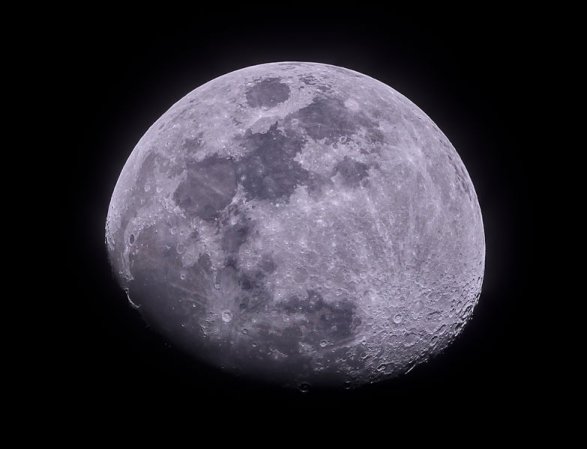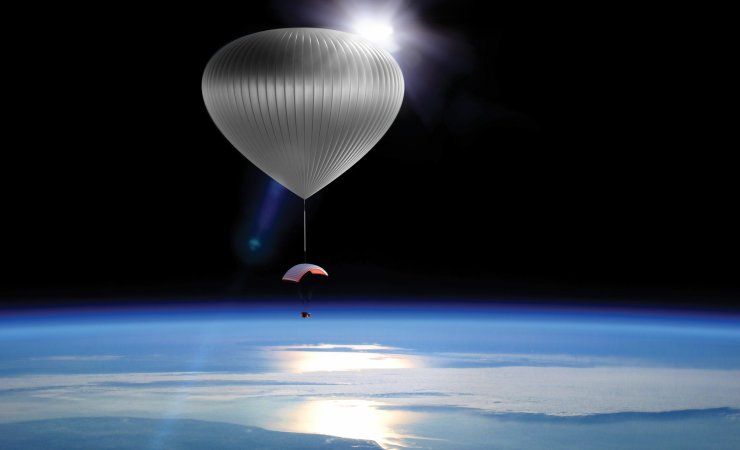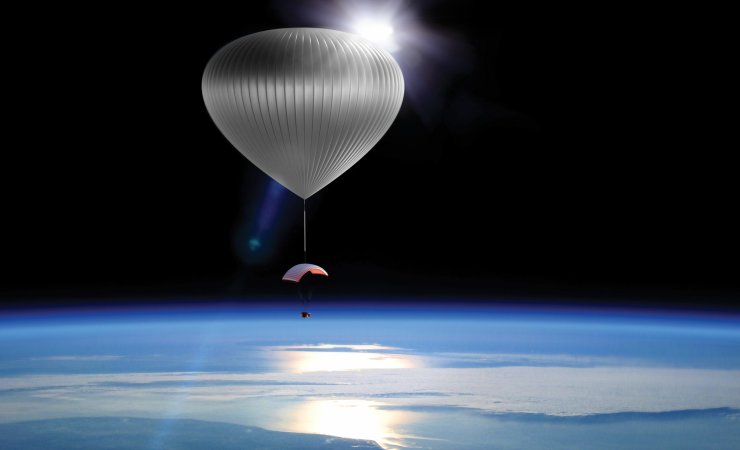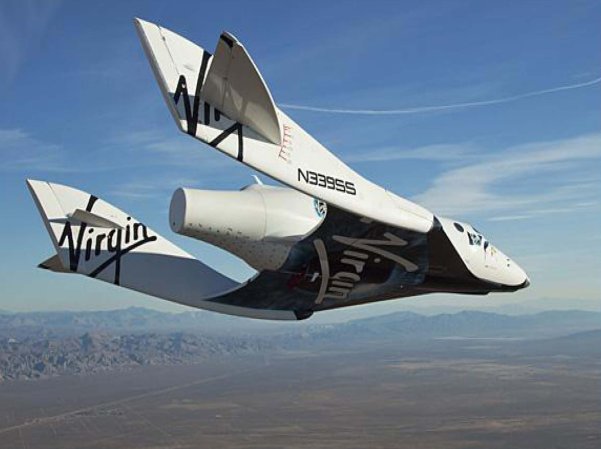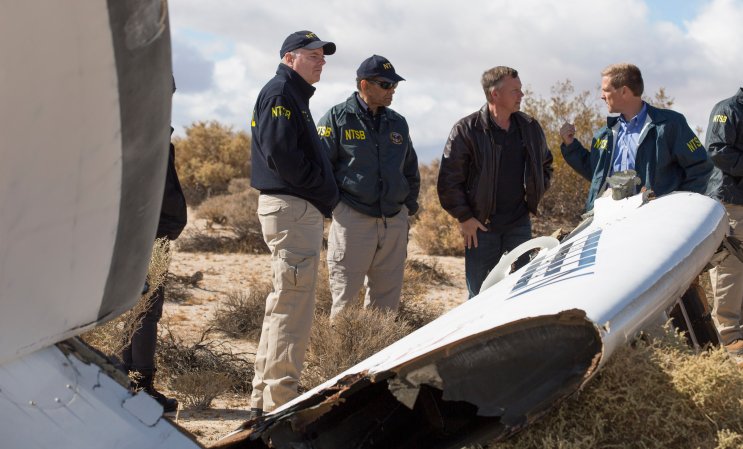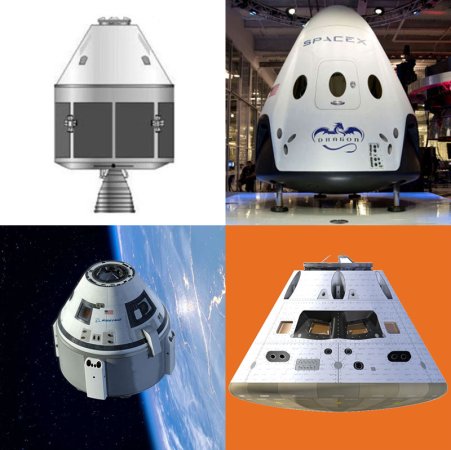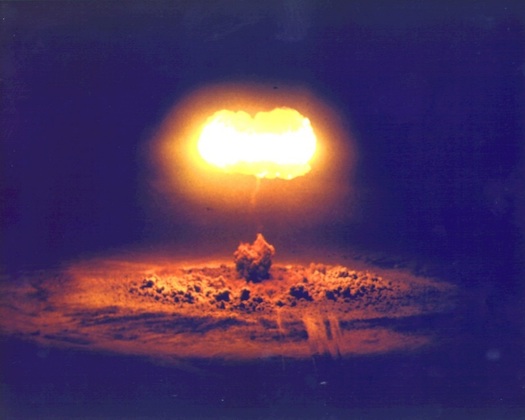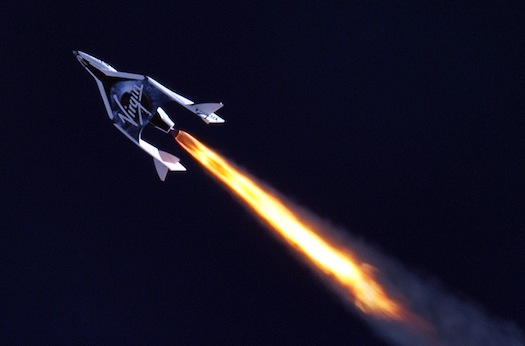

This story is part of a special PopularScience.com series on the future of energy.
Virgin Galactic proudly touts the fact that each of the passengers who will fly into sub-orbital space on its SpaceShip2 will emit less carbon dioxide than a typical air passenger on a flight from New York to London. But some scientists say carbon dioxide emissions are irrelevant to measuring the greenhouse gas footprint of the nascent space tourism industry. The big threat from the scaling-up of space travel, they say, comes from something called black carbon—a type of particulate matter that, when hurled into the stratosphere, builds up for years, absorbing visible light from the sun. According to one study, black carbon emitted into the stratosphere by rockets would absorb 100,000 times as much energy as the CO2 emitted by those rockets.
“There’s one issue and it’s simple: you don’t want to put black carbon in the stratosphere. Period,” says Darin Toohey, a professor of atmospheric and oceanic sciences at the University of Colorado, Boulder. Industry insiders say otherwise. Who’s right?
***
Black carbon should be familiar to anyone who’s ever idled behind a diesel truck or sat by a wood stove: it’s what makes soot black. Formed from the incomplete combustion of fossil fuel, biofuel, and biomass, it is emitted directly into the atmosphere and absorbs about a million times more energy than CO2. According to one study, it is Earth’s second largest contributor to climate change, after carbon dioxide. The reason black carbon doesn’t wreak more havoc on the environment is that it has a short lifetime in the lower atmosphere—precipitation washes away black carbon emissions from planes and other sources within a matter of weeks.
Not so in the stratosphere, which begins as low as 5 miles above the Earth and rises up to about 31 miles. Rockets need to scream through the stratosphere to the point 62 miles above the sea level, where space is conventionally said to begin. They are also the only direct source of human-created compounds above 12 miles. Because there is no rain or other atmospheric factors to wash out the black carbon in the stratosphere, black carbon would linger for 5 to 10 years or more. Moroever, rockets produce over 1,000 times more black carbon per unit of fuel than standard aircraft.
So in 2010, Toohey and Martin Ross, the head of the Center for Launch Emissions Analysis and Research at Aerospace Corporation, and Michael Mills of the National Center for Atmospheric Research,crunched the numbers to estimate the black carbon effects of a hypothetical 1,000 flight-per-year industry. They measured the black carbon’s “radiative forcing” – a metric for how much extra energy the Earth and its atmosphere absorb from a given manmade or natural phenomena. The radiative forcing from the black carbon that rockets placed in the stratosphere was up to 100,000 times greater than that of the CO2 released by the rockets. (In contrast, the radiative forcing of the black carbon placed for just a few weeks into the atmosphere by jets is less than 1/10 of that of its carbon dioxide).

How this extra heat in the stratosphere would effect climate is less clear, but it would definitely cause some climate change – both warming and cooling. The computer model showed a complicated pattern in which a ring-shaped cloud of black carbon would form at the latitude of the launch site, leading to shade that would cause cooling there, with corresponding warming in other places. Polar regions warmed or cooled by up to 5 degrees, depending on the season. The heating also caused ozone to radiate throughout the stratosphere, causing lower levels in some places and increases in others. The point of the study was not to say a warmer stratosphere is disastrous, but rather that 1,000 launches per year will have a significant climate change effect – and that the industry should have to study and explain the implications. After all, proposals to doctor the climate by deliberately injecting particles into the atmosphere have generated international outcry. Without meaning to, and without fully understanding the effects, Ross says, a growing space tourism industry will function like an experiment in engineering the climate. “At some point, the particles put into the stratosphere by rockets begin to look at little bit like geo-engineering,” says Ross.
***
Here’s where space tourism comes into play: The number of space launches annually around the world numbers around 70 today, but that figure could rise drastically, as private companies jockey to turn space tourism into routine adventure travel. The aerospace research firm Futron forecasts that by 2021 the space tourism market will consist of 13,000 potential customers, with possible revenues of roughly $650 million per year. Assuming the business is successful, commercial space travel might very well reach 1,000 launches per year some time in the next decade – XCOR alone plans to ramp up to four launches per day, as part of its “Southwest airlines” model. That creates 1,000 opportunities to shoot black carbon directly into the stratosphere. The amount of black carbon emitted during combustion on Earth, or in the trophosphere, where airlines fly, tends to be low, because of the relatively rich supply of oxygen. Once you get into the stratosphere, where low pressure leads to less oxygen, black carbon can amount to as much as 5% of the products of combustion.
The Federal Aviation Administration (F.A.A.), the organization responsible for assessing environmental impacts and deciding whether to grant licenses to launch vehicles into space, says the effects of black carbon in the stratosphere are unclear. “Although black carbon is known to be a short-term climate forcer, research on the potential climate change impacts of black carbon from rockets is in a very early stage, and any projections of impacts are speculative,” writes George Nield, the F.A.A.’s associate administrator for commercial space transportation, in an email.
The space-tourism industry has downplayed black carbon’s potential harm. Virgin Galactic declined repeated inquiries to comment. Andrew Nelson, the chief operating officer of XCOR Aerospace, which is currently selling $95,000 tickets for sub-orbital flights, says that the blend of kerosene and liquid oxygen in his XR-5K18 rocket engine powering its Lynx suborbital spaceplane will emit much less in the way of “aromatic” hydrocarbons than traditional kerosene-based rocket fuel. And he says the XR-5K18 will burn much more cleanly than the solid rocket boosters used in the Space Shuttle or “hybrid” rocket engines, which burn both solid and liquid propellant.
“XCOR will have di minimus impact on our environment,” Nelson says. “Our fuels are almost completely free of particulate matter. [They have ] 20-40 times less aromatics than traditional rocket fuels, and hundreds, if not thousands of times less particulate matter than hybrids or solids. So the concern about carbon or other particles is moot for us.”
Toohey still wants to see peer-reviewed studies of the actual interaction of XCOR and other engines with the stratosphere. “I have not seen any publications that confirm (or refute) the claims of particle-free emissions from combustion of any fuel in the upper atmosphere,” Toohey says. “So I think it is fair to say that we need studies to benchmark the emissions of all rocket types in order to be able to assess their impacts.”
